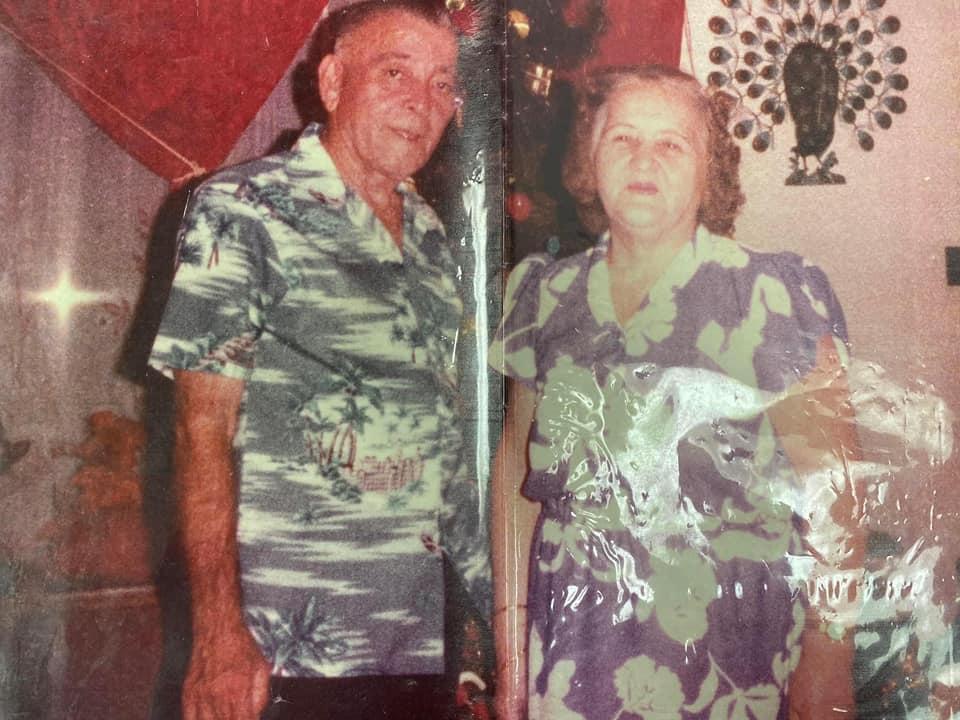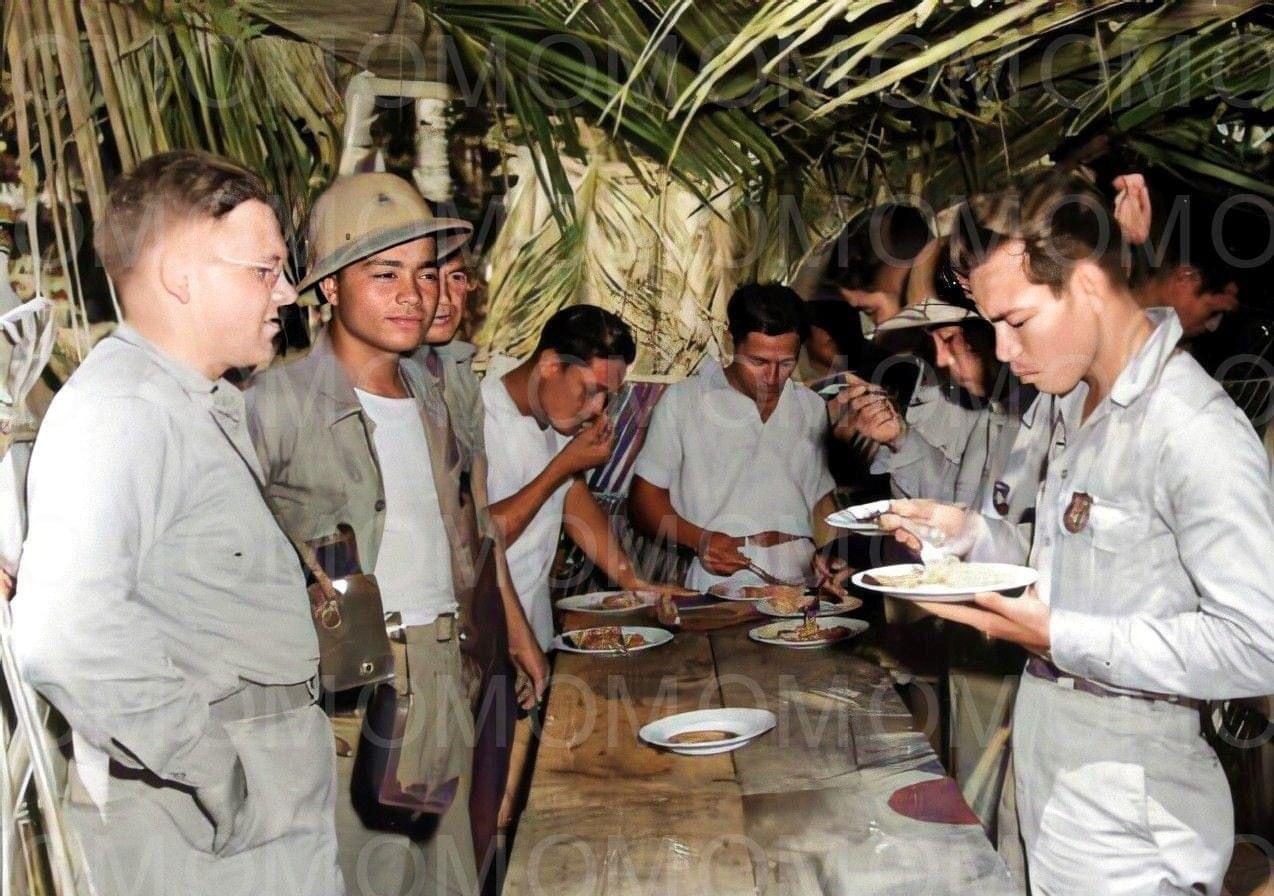I’m going to tell you a story about the last war on Guam, the freedom I cherish, the America I grew up to love, and a real-life treasure chest full of gold, rubies, diamonds, emeralds, other jewels, and American currency from the 1940s that has never been found.
I never lived through a war, and never want to; but my grandmother did. She and my grandfather, who also was a young man during the Japanese Imperial Army’s occupation of Guam, reared me. They are the reason I understand the Chamorro language. Grandpa was from Agana. Grandma, from Merizo. If you know about the occupation, then you know the Japanese soldiers were particularly brutal to Merizo residents, and that Merizo was liberated from the soldiers before any other place on Guam… by brave Chamorro men, who had enough of their enslavement.
I know this and much of what I know about Guam history during the occupation, not from my grandparents, but from history books. Grandma and grandpa did not talk much about the war. In fact, grandma never told me that her father, Tomas Espinosa Cruz, and her two brothers, Tomas Anderson Cruz and Jesus Cruz Anderson, were among the few who survived the Tinta Cave Massacre. I learned this fact, when reading their names among the list of survivors on a Tinta Cave Massacre memorial program booklet.
Grandma did tell one story, though. As the Japanese soldiers were thrashing Merizo, her father took her – and only her, his favorite child – from their home in Merizo, up the hills behind the house, and far into the jungle.
They fled with a chest full of gold, gem stones, American money. She said that if the soldiers had found the treasure in my great grandpa’s office across the house, they would have executed the entire family, including my great grandma from Sumay, Margarita Anderson Cruz, and her 16 children and numerous grandchildren.
I asked her the first time she told me the story why her father had so much treasure. She told me he was a businessman and also a goldsmith.
So, they ran through the jungles, each carrying one side of the treasure chest. And something alarmed them, so they stopped, hid; and, when they were certain the risk of danger subsided, they buried the treasure chest.
It was the one story she told about the war; and she told it a number of times to me. My sister said she remembers grandma telling her this story as well.
I always wondered about that treasure chest and whether the story was true. Grandma said that after the war, she and her father and brothers went to look for it, but never found it.
Four years ago, I told the story to my Uncle Ed, who is the son of my grandma’s younger brother, Uncle Francisco Cruz. He knew exactly what I was talking about, and even gave context to the story.
My great grandfather was injured during the Tinta Cave Massacre and needed medical aid. He had a girlfriend in Inarajan, who was a nurse. That was where he was headed with my grandmother, when they left the house with the treasure chest.
Somewhere, buried beneath the ground, between the central part of Merizo and wherever great grandpa’s chapmak’s home in Inarajan was, is a chest full of treasure from World War II.

The story, I suppose, tends to romanticize the brutal occupation that cost the lives and limbs of so many of our people, American Marines and soldiers, and Japanese occupiers. But, I think this was the reason it was the only story my grandma would tell about the war. It literally is a diamond (and more) in the rough.
The Tinta Cave Massacre occurred on July 15, 1944, which means that around this time 79 years ago, my grandma and her dad made that flee through southern mountains and valleys. Scattered around that trek were the cries of a peaceful people yearning for freedom, and the corpses of Chamorros caught in the middle of a battle between imperialism and the fight to end aggression.
Contrary to the cacophony of separatist voices claiming a grand conspiracy of colonialism these days on our island, my grandparents loved America. They loved the military and especially the Marine Corps. They were grateful for freedom from slavery and annihilation.
And with all due respect to those separatist voices, they never endured what my grandma, her family, and all the Chamorros went through and died for during that war. Their voices are what matter, because they speak to us from the grave about a commemoration of their suffering so that we should not struggle through what they did.
They didn’t agree with everything the military did, and they were frustrated about how long it took to be welcomed into the American family. It is something we struggle with to this day, as we remain an unincorporated territory of the United States. But, they knew, because of what they went through, that in the absence of good that space will be filled by evil. That in the absence of America, a nation with far less virtue – one unrooted in a recognition of the inalienable rights of mankind – would fill the void.
Today, Japan is our friend; one of America’s greatest allies. Its people ironically developed our tourism economy. Today the threat to our survival on Guam comes from the Communist Party of China and from North Korea. And you know who America is sending to help us stay free from these threats of slavery and annihilation? Components of the Third Marine Expeditionary Force, the successor to the 3rd Marine Division of World War II.
The very Marines force that came to liberate Guam on July 21, 1944. They are scheduled to arrive in December 2024, 80 years after their force liberated Guam.
Yes, Uncle Sam is coming back to Guam. God bless you, God bless Guam, and God bless the United States Marines, and God bless America. Happy Liberation Day.





1 Comments
Eleanor ANDERSON Swadener
07/23/2023 at 12:03 PM
Thomas Espinosa Cruz is my uncle. Known as Thomas Doma. My mom’s half brother and his wife Margarita ANDERSON Cruz is my dad sister. My dad is Francisco de Leon Guerrero ANDERSON of Sumay Guam. My mom is Ascemsion Espinosa Lujan ANDERSON.; from Merizo. I love this story. Yes I remembered my mom telling me that his brother Thomas made his sisters gold bracelets and earrings. And definitely a successful business man. Thank you for sharing this story. Edward is the only one now living and his home is in Malesso. Si Eleanor ANDERSON Swadener. 🌺